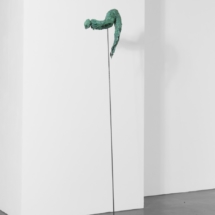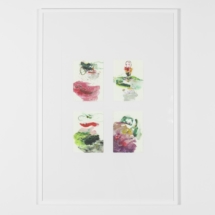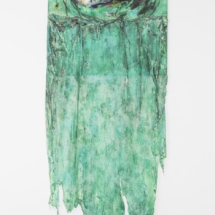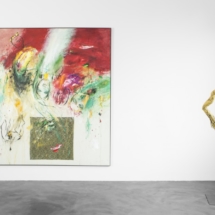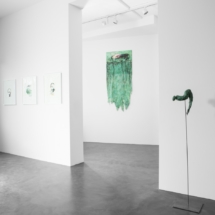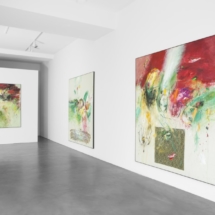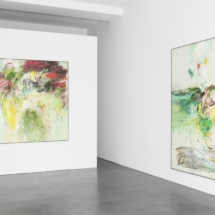A Willow Grows Askant a Brook
Heather Betts
Exhibition: 5 February 2016 – 5 March 2016
Act 5: Scene 7
“There is a willow grows askant a brook,
that shows his hoary leaves in the glassy stream”
The image of Ophelia drowned with a wreath of flowers has captured the popular imagination. A young girl with responsibility to a crown, a murdered father, a volatile brother, and a suitor whose mind has been overthrown to the ghosts of the past and the crown gone awry – Ophelia has inspired mystery and admiration. Although she is subject to a social standing where she has little power, her sentimentality, convictions, and eventual abandonment to death show her as an antithesis to Hamlet in her decisiveness versus his indecision. As Ophelia descends into madness, she retreats into her own imagined world in which herbs and flowers as well as portions of song make up the beauty and order of her surroundings. The character of Ophelia serves as a metaphor for artistic practice, she breaks the code of what is expected, and has the courage to stand by convictions, and to abandon herself to laws of other worlds.
Heather Betts works in cycles that draw from music, theatre, and literature. Her most recent work takes its starting point from Hamlet in conjunction with her husband and composer Brett Dean’s pre-opera symphonic suite, ‘From Melodious Lay.’ As Ophelia sings her way into the riffs and arpeggios of the glassy stream, this cycle of works uses the language of music to create a visual lexicon of characters. Although Betts does not strictly define each of the characters, clues appear in the canvases to delight the observer’s guess. Betts’ practice incorporates painting, drawing, and sculpture, but relies consistently on music as a reference. The process behind this series of works can be described as “creating harmonies on a tactile surface” that invite the viewer to linger on details as the eye creates a path through the composition. The vibrancy of the works show an expert’s mastery of colour combination and the emotional effect on the psyche.
Art Historical and musical references intertwine as Betts’ practice makes a claim to the importance of working through and out of a canon rather than beginning with schism. The precarious line between figurative and abstract painting is unraveled by combining the lines and forms of, say, Baselitz with the abstraction of Twombly. Local Berlin influences are also present as in Marwan Kassab-Bachi’s ideas of figures as landscape that became an important local discussion through his professorship at the Hochschule der Künste.In this exhibition, a number of recent works around the theme of Hamlet appear together in an ode to Ophelia, the images directly show the young romantic or include figures who allude to her traits. Characters float freely through the canvas in all directions, their heads take on form, the rest abandons itself to the free-flow of the imagination. The dark or charcoal outlines of Betts’ figures give impressions of movement and an other-worldly dimension as they float through the currents of narrative, waves of emotion, and the aural frequencies of symphonies.
In Betts’ dynamic oeuvre, textile is attached to canvas, lace and damask suggest the delicate beauty of the female form, yet they are ‘sullied’ by vibrant pigments con fuoco.
“Till that her garments, heavy with their drink,
Pull’d the poor wretch from her melodious lay
To muddy death.”
Exeunt.
